25 Immune Boosting Herbs and Spices
This post may contain affiliate links. Read my full disclosure here.
Adding immune boosting herbs and spices to the menu is a great way to support immune function and overall health. We’ll share our top choices to use as herbal medicines and in cooking, plus some of my favorites to grow in the garden.
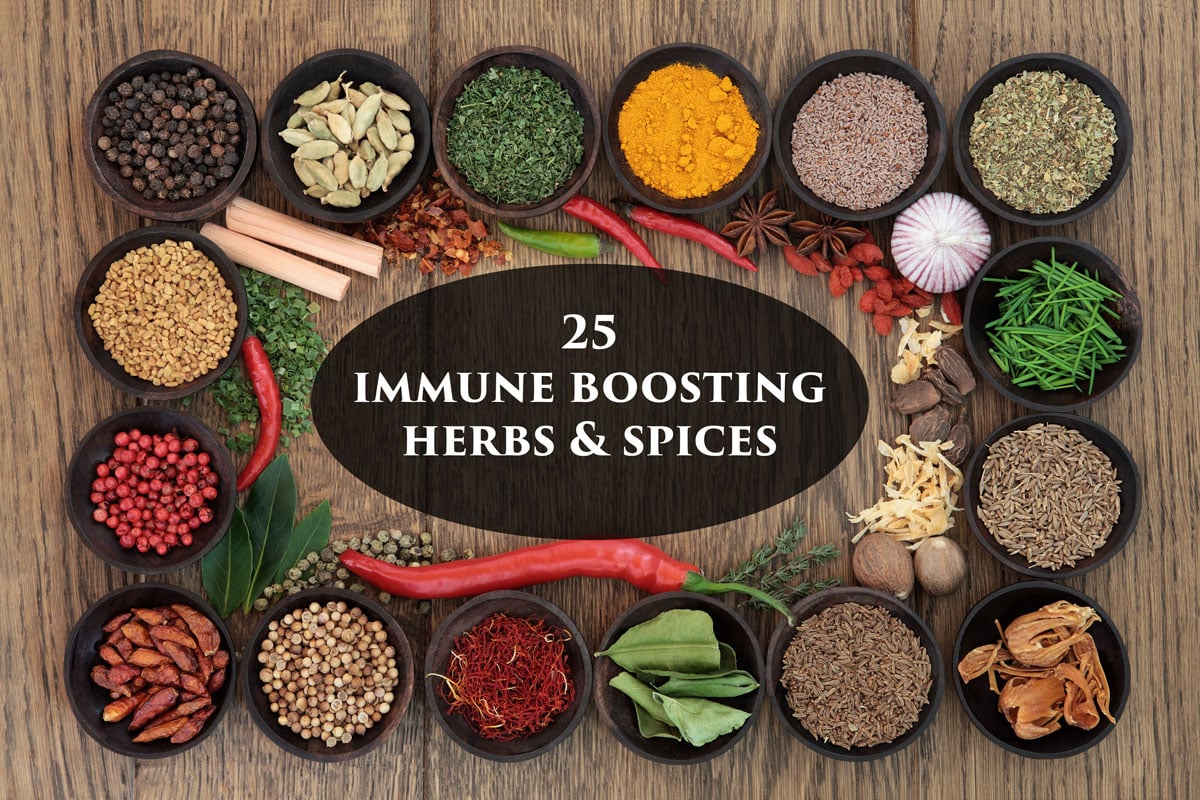
Improving gut health is a great way to build a strong immune system. Many warming spices like cinnamon and black pepper are also anti-microbial and anti-inflammatory – and perfect for cold and flu season. From a hot cup of ginger tea to a rich soup broth loaded with herbs, it’s easy to add some good food that’s good for you.
Herb or Spice?
Generally speaking, the term “herb” refers to the leafy part of plants, whether is it used fresh or dry. “Spices” usually refers to plants where we use the roots, bark, and seeds.
That said, you may see a plant called an herb in one place and a spice in another, or even mixed in with the produce. For instance, garlic and onions are spices, but also have medicinal uses.
Many herbs are easy to grow, and make a great addition to the yard or garden. The article “11 Best Medicinal Herbs to Grow” shares some of my favorite herbs and growing tips. Many natural food stores also stock at least some fresh herbs, and a wide variety of dried herbs and spices.
Immune Boosting Herbs and Spices
From traditional Chinese medicine to Native American traditions, there are many different plant healing traditions around the world. There are far too many to cover in a single article, but these are some common herbs and spices that may stimulate the immune system.
Herbs
- Purple Coneflower (Echinacea angustifolia and purpurea)
- Elderberry flowers or berries (Sambucus species)
- Calendula (Calendula officinalis)
- Boneset (Eupatorium perfoliatum)
- Chamomile (Matricaria recutita)
- Astragalus (Astragalus propinquus)
- Yarrow (Achillea millefolium)
- Plantain (Plantago species)
- Rosemary (Rosmarinus officinalis)
- Sage (Salvia officinalis)
- Thyme (Thymus vulgaris L)
- Oregano (Origamum vulgare L)
- Coriander, Cilantro (Coriandrum sativum)
- Spearmint, Peppermint (Mentha spicata, Mentha X piperita)
- Licorice Root (Glycyrrhiza glabra)
- Bay leaf (Laurus nobilis)
Spices
- Cinnamon, Ceylon, Cassia, Saigon (Cinnamomum verum, cassia, loureiroi)
- Ginger (Zingiber officinale Roscoe)
- Cloves (Syzygium aromaticum)
- Turmeric (Curcuma longa L)
- Cumin, black cumin, black seed (Cuminum cyminum L. Nigella sativa L.)
- Chili pepper, paprika (Capsicum annuum, Capsicum frutescens)
- Black Pepper (Piper nigrum L)
- Garlic (Allium sativum)
- Onion (Allium cepa)
Rule of thumb: Strongly scented and flavored herbs and spices come with strong oils that can add flavor, improve your health and often extend the life of your food.
“Must Have” Immune Boosting Herbs for the Garden
These are some of my favorite herbs that boost overall immune health and fight viral infections like the common cold and flu.
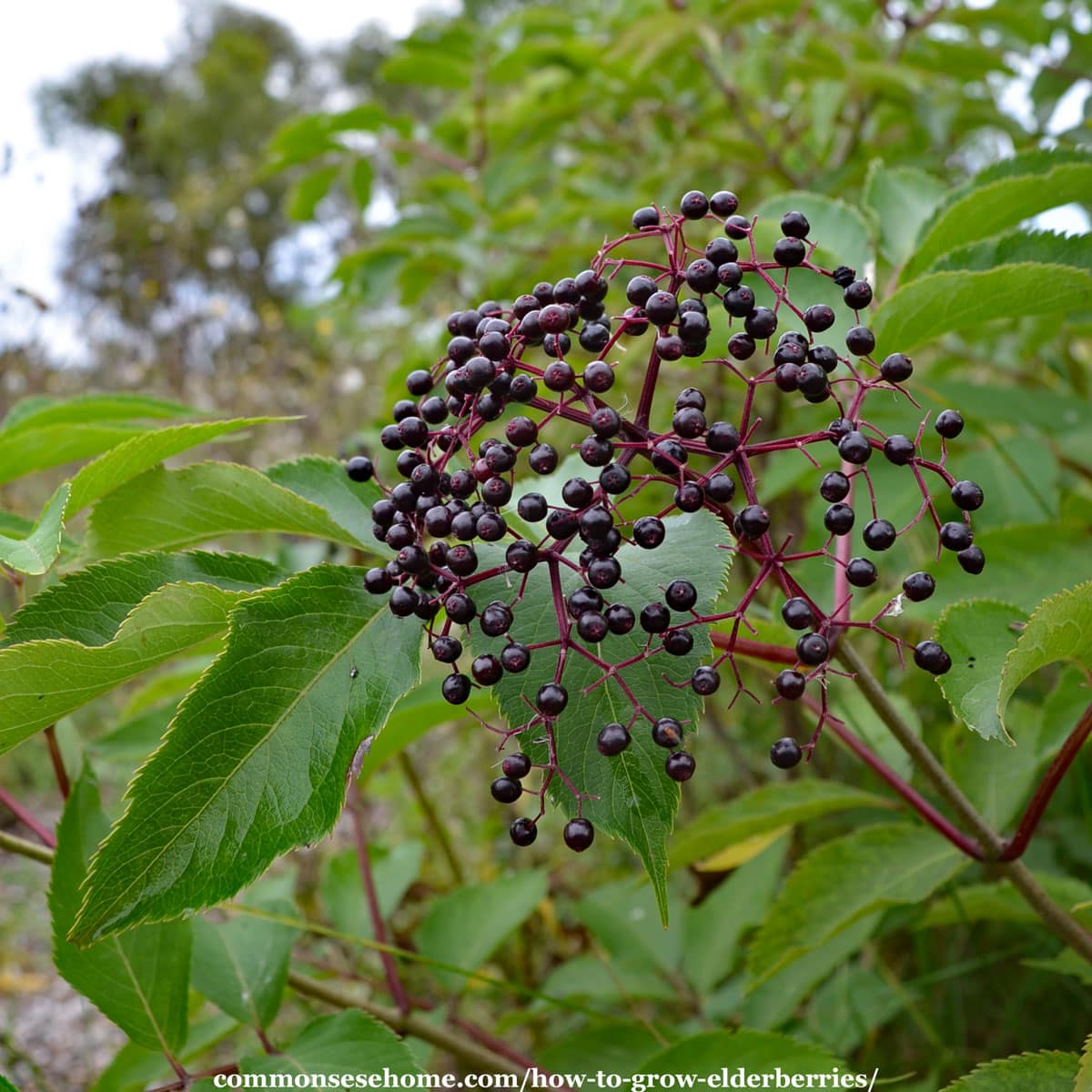
Elder
Elderberry immunity booster products became so popular in recent years that dried elderberries for making syrup were often out of stock. Thankfully, along with the increasing interest came an increase in growers, and more nurseries selling elderberry plants.
European elderberry (Sambucus nigra) is native to Europe, and American elderberry (Sambucus canadensis) is native to North America. Both have similar medicinal properties.
We put in our elderberry patch a few years ago, and now have enough berries for our use and to share with friends and family. The plants provide elderflowers, too, which are also medicinal. (Learn more about growing your own elderberry bushes here.)
Harvest elderflowers on a dry sunny day, selecting flowers in good condition with a fresh fragrance. Clip the entire flower head for drying, then strip the dried blossoms off the stems with a fork.
To make elderflower tea, use one heaping teaspoon of dried elderflowers per cupful of boiling water. Cover and infuse for three to five minutes, and then strain and drink hot. Elderflower is one of the best herbs to break a fever and encourage sweating. Combine with yarrow and mint in the early stages of a cold or flu.
Elderberries may reduce the length and severity of colds and flu. Elderberry glycerite and syrup are excellent for coughs, too. You can learn how to make elderberry syrup from fresh or dried elderberries here.
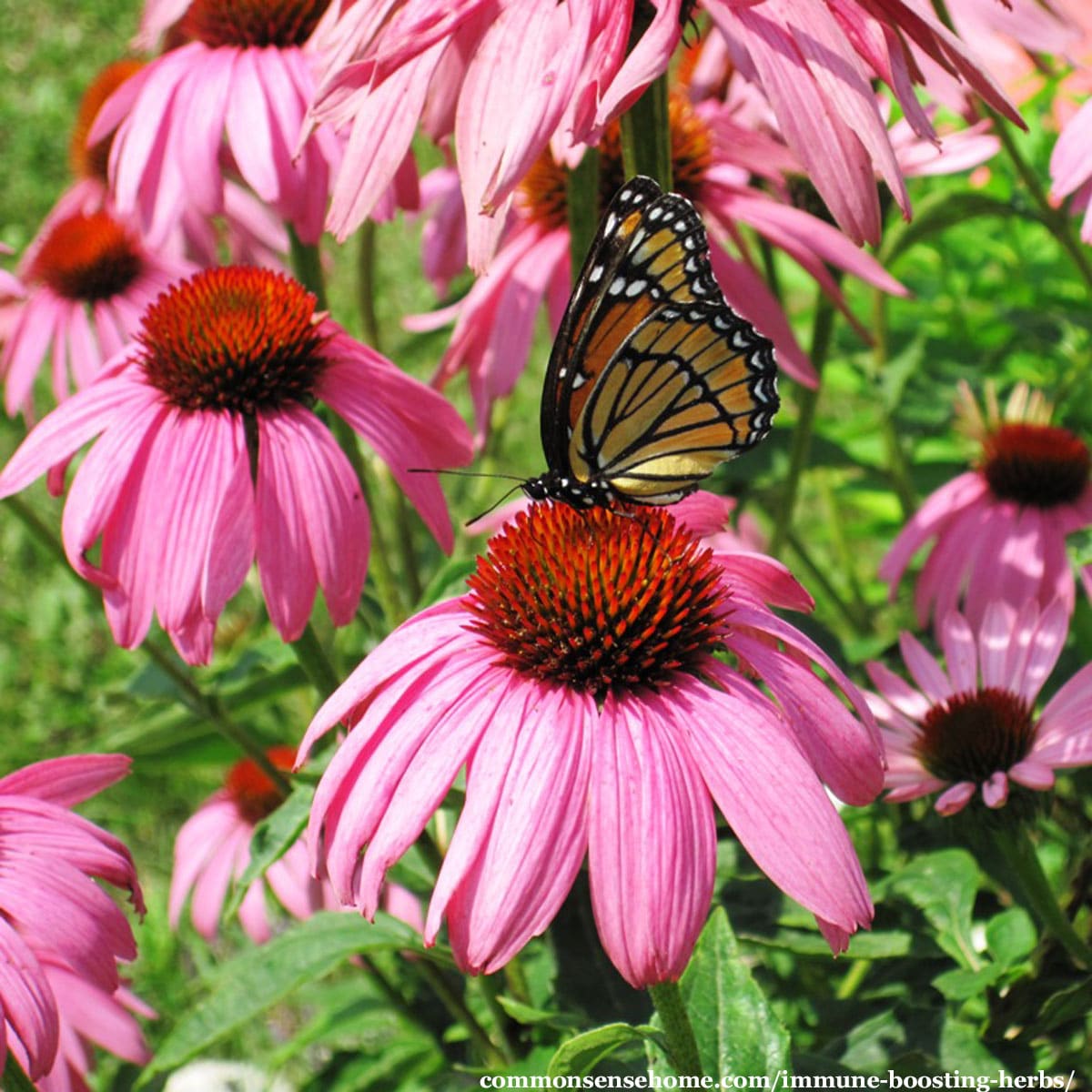
Echinacea
Echinacea is another well known immune boosting herb, though study results are mixed on its effectiveness. One study found that it reduced the odds of developing a cold by 58% and cold duration by 1-4 days. Another study found no difference between the plant and a placebo.
I suspect like any herb, it’s more than the sum of its parts, and the whole herb works different than isolated compounds. Herb quality is also important.
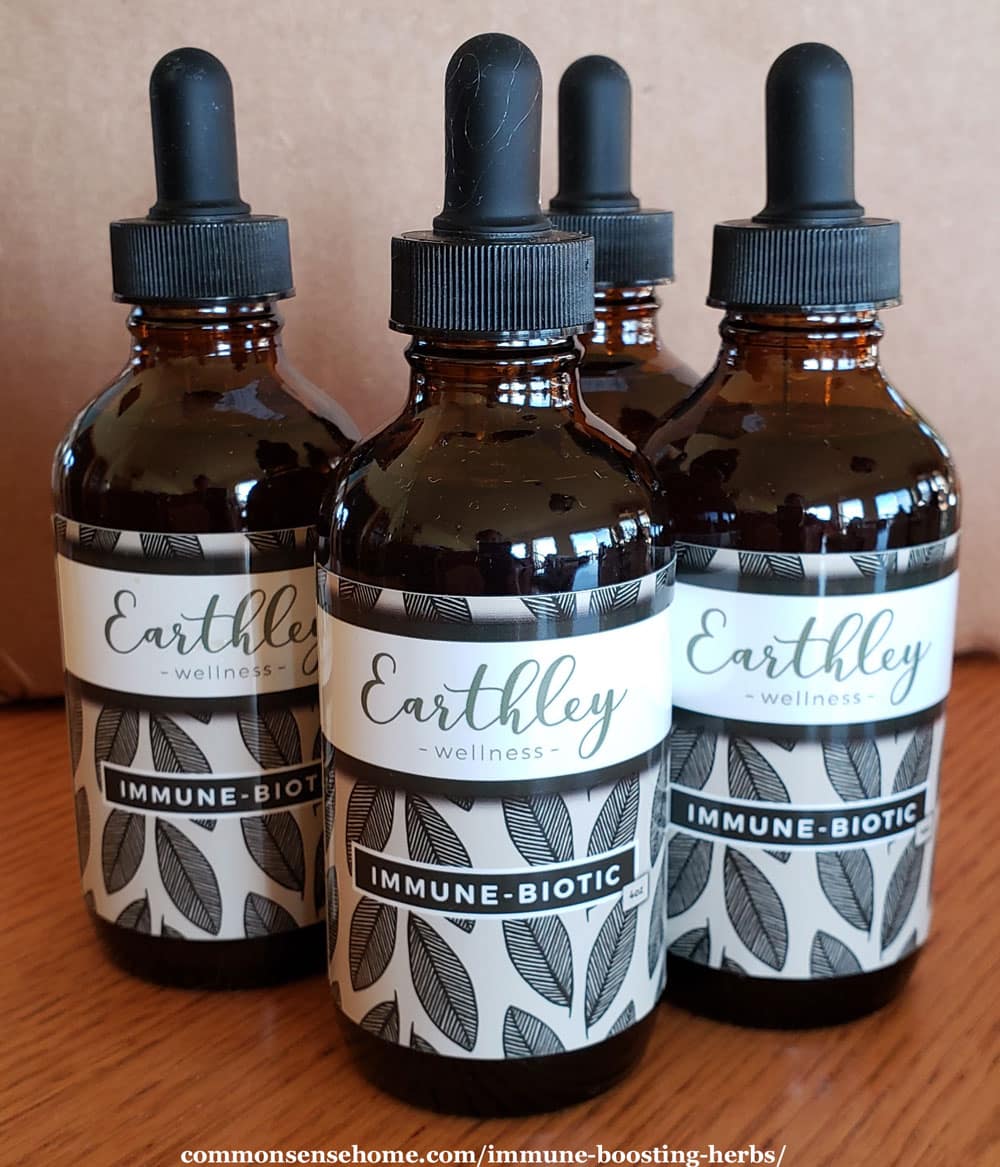
Echinacea is easy to grow, though it will take some time before the roots are large enough to harvest. The entire plant is used medicinally. Coneflower leaves and flowers work best for tea, while roots work better for tincture.
The above ground parts have more polysaccharides, which are immunostimulant. The roots are high in volatile oils.
Would you like to save this?
Those sensitive to the daisy family should avoid echinacea.

Mint
Mint is naturally cooling and soothing. It’s my favorite herb for upset stomach, but also works well for fevers and congestion. Mild flavored mint tea is safe for both adults and children. Try mint in herbal gelatin for those who don’t like tea.
Mint can help open airways and act as an expectorant to clear out phlegm. It’s also antibacterial and anti-inflammatory. Enjoy mint tea hot or warm, breathing in the vapors. Mint essential oil is also popular for diffusing to open up airways.
Mint is an aggressive grower, and may try to take over your garden beds. I plant it where I can mow around the plants to keep them in check, or keep them in a container.
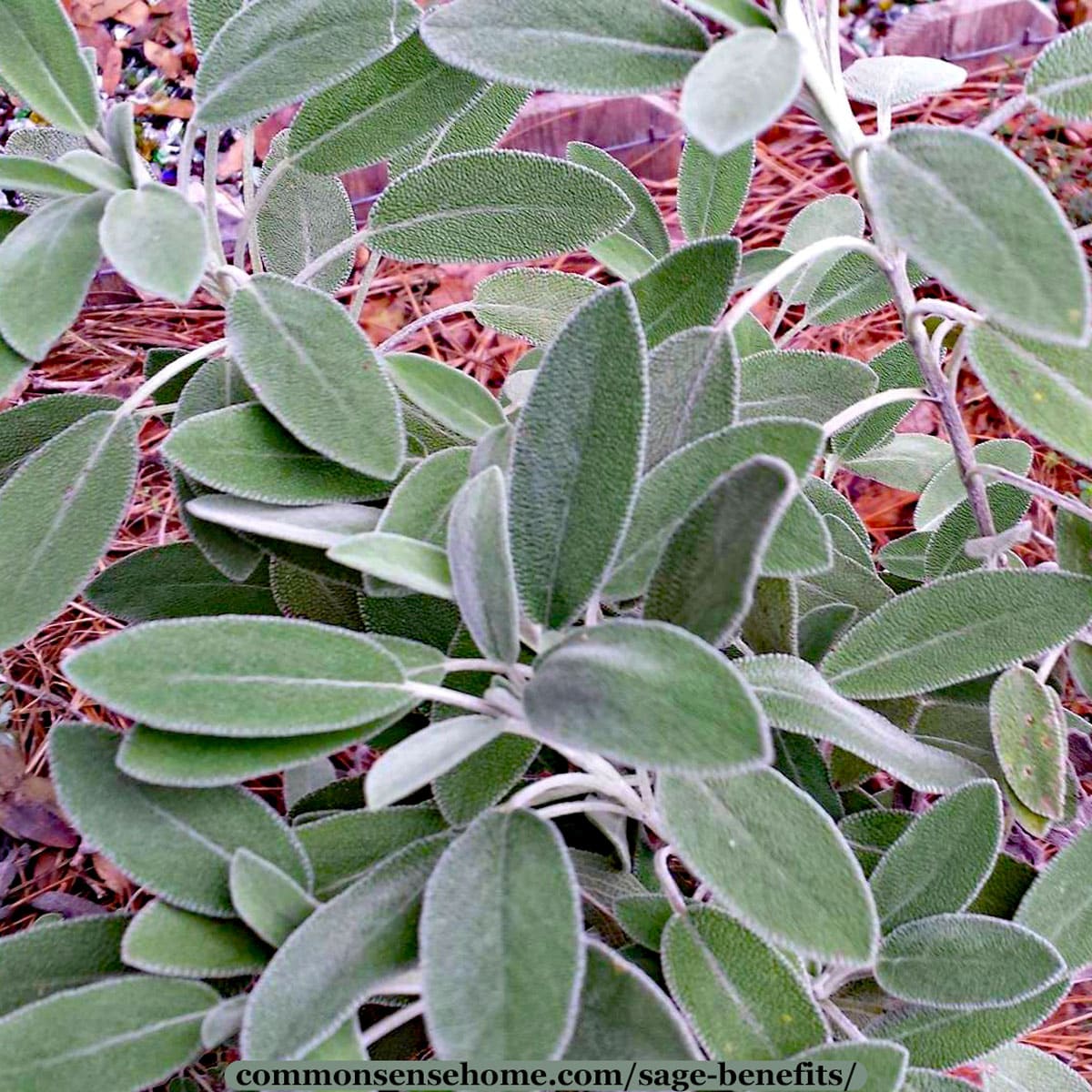
Sage
Sage is antioxidant, anti-inflammatory, antibacterial, antiviral, and antimicrobial. It prefers sunny, well drained soil – we have a plant that’s taken over a corner of the greenhouse.
Try a sage tea gargle for sore throats, or sip on the tea at the first sign of symptoms. Sage is also a safe herb to feed to poultry to improve their immune health.
Best Cold and Flu Tea Recipe
- 2 teaspoons sage
- juice of one lemon (or one teaspoon lemon balm herb)
- Pinch cayenne pepper
- 1 tablespoon (15 ml) honey
To prepare the tea, pour one cup boiling hot water over sage and allow to steep for 10 minutes. Strain out herbs, add remaining ingredients, and drink hot.
Read “Sage Benefits for Home, Health & Personal Care” for growing tips and recipes.
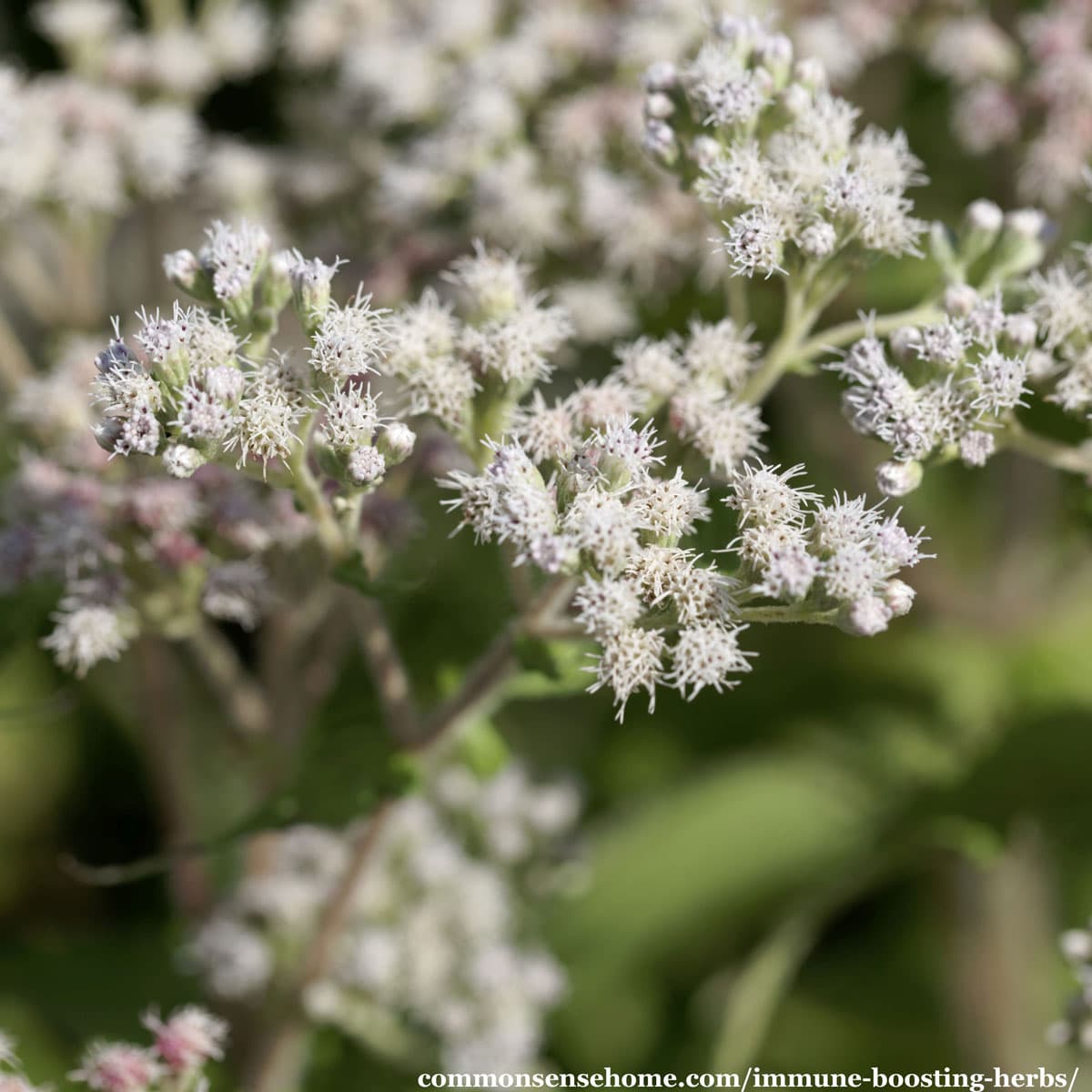
Boneset
Eupatorium perfoliatum is a perennial plant indigenous to North America. You may be able to find it in the wild on the edge of marshes or ponds, or you can try cultivating it in rain gardens.
What captured my attention about this plant was a story I read in “Edible & Medicinal Wild Plants of the Midwest. The author shared how boneset was used to cure a kind of influenza called “breakbone fever” back in the early 1800s.
“Breakbone fever” was a viral illness that made the muscles, bones, and joints of those afflicted hurt so badly they felt as if they were breaking. When treated with Eupatorium perfoliatum, they felt as though their bones had “set” or healed.
Boneset stimulates white blood cells to fight viral and bacterial infections. This is similar to the action of echinacea, but the two paired together are stronger than each used separately.
We were hit with some illness that matched this description back in October, and I wish I had known about boneset then. By this time next year we should have our own supply. The Holistic Herbal recommends a tea with 2 parts boneset and one part each elder flower and peppermint for influenza.
More Home Remedies
for Cold and Flu Season
Treat and prevent cold & flu naturally.
While herbs and spices are not a “magic bullet”, good nutrition is an important part of staying healthy. Adding these nutritional powerhouses to the menu and medicine cabinet is a good choice for a common sense home.
Sources:
Edible & Medicinal Wild Plants of the Midwest
This post is for general information and is not intended to replace medical advice from a healthcare provider. Please see a trained healthcare practitioner if symptoms are severe or persistent. Check for contraindications if you are on any medication or you have a medical condition.

This article is written by Laurie Neverman. Laurie is a lifelong learner with a passion for natural remedies and holistic healing. She’s successfully improved her eyesight, cleared her psoriasis, and gotten off of prescription medication.
Last updated in 2023.

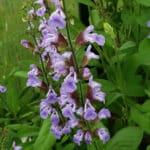
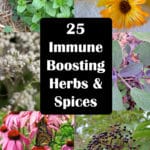
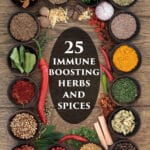
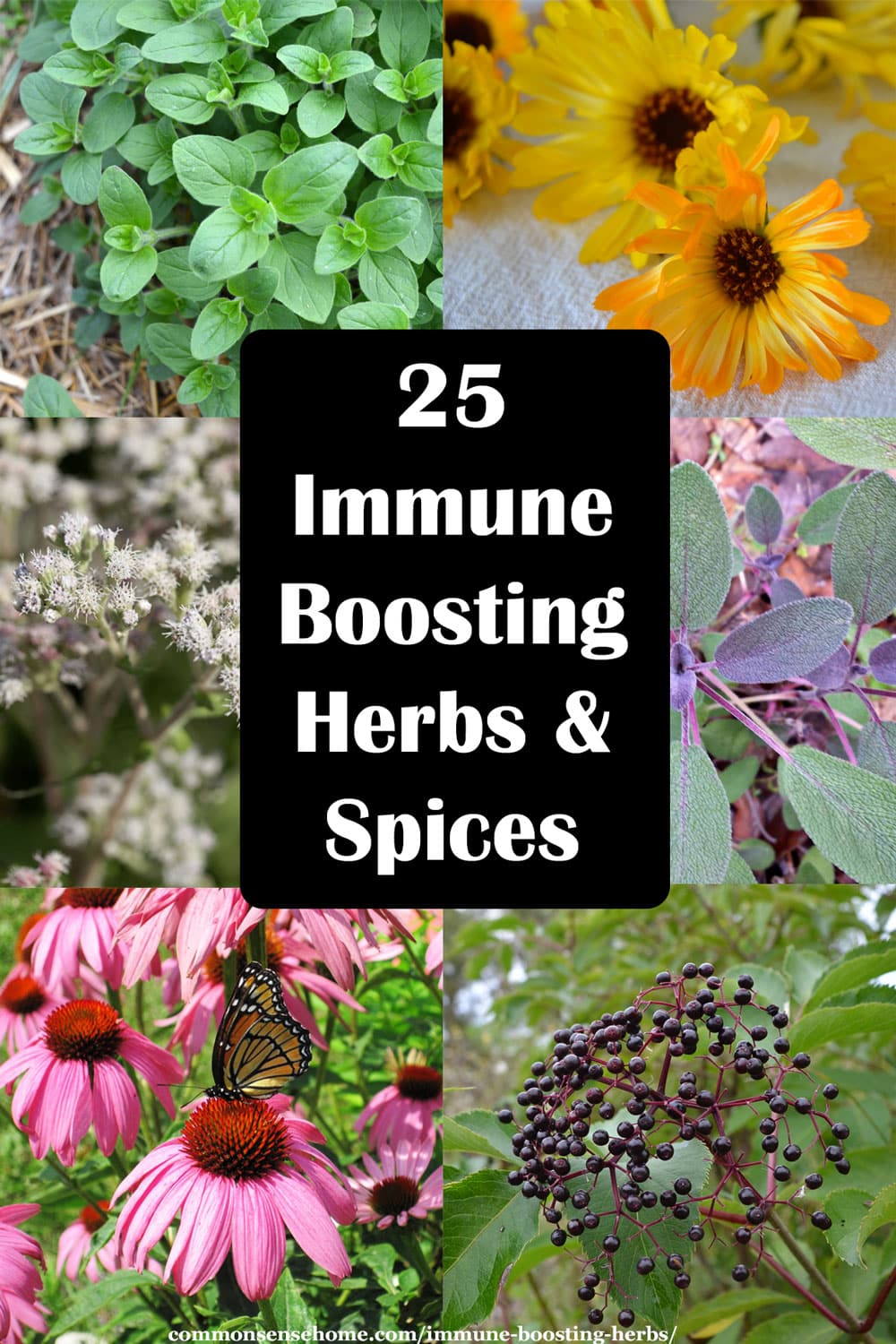
I got to try this….
Winter is the season that affects most our health. To keep healthy, I try to drink as many hot liquids as possible. I also try gargling every time I get a sore throat. It does wonders. Chicken soup and warming spices are also of great help. Wonderfully written article!
I have both of Stephen Harrod Buhner’s books. (Herbal Antibiotics and Herbal Antivirals) HIGHLY recommend them!!! The Antibiotic book had two chapters (Ch. 8 : A Handbook of Herbal Medicine Making and Ch. 9: An Herbal Formulary) that made price of the book worth these two chapters alone!!! And the bibliographies, both book and medical journal are awesome! He goes more into detail about medical journals (how to access/read) in the Antiviral book. I’d take these books with me to the doctor to show him WHY I need that culture done. This author also has a sense of humor and isn’t afraid to use it!!! I got mine through Mother Earth News, but I’m sure that Amazon is another good source. These books have a “forever place” on my Keeper Shelf!!! And have started hunting for some of the books from his bibliographies as well.
I have the original Herbal Antibiotics and the second edition (which is much more comprehensive), as well as Herbal Antivirals, The Lost Language of Plants and a couple more of his books. The volume of knowledge he has accumulated and shared over the years is amazing.
Elderberry extract is the greatest! Store-bought or homemade……
Hi there, I just wanted to say I love your blog!!! so many great tips.
One thing I wanted to know is if you are familar with CHAGA ?
Its the number 1 antioxidant in the world, it has healing properties aswell as boosts your imune system, you find it on birch trees only then dry it and either make tea or a double extract by soaking the outside (black part) in a high alcohol for a couple months, as the outside only disolves in alcohol while the inside is only soluble in hot water (tea) mix together and you have a double extract 🙂 It has even been proven to fight cancer cells and many, many other diseases, its been used in Asia and siberia for centuries, and now even some doctors are recomending it to patients instead of chemotherapy. I have now been drinking the tea everday for close to a year and a shot of the extract every so often (winter) and havent been sick since and I have always sufferd from colds and flu’s in the fall as I dont got the best imune system but that has changed now. I add some honey or lemon or both and it makes a very nice tea much like a breakfast tea.
I was turned onto Chaga from my employer who has been drinking it for 30 years and hasnt rememberd when he last had any bad sickness, and we are wildlife viewing guides that are out in all weather conditions in central British Columbia.
Again thanks for all your tips and advice, I look forward to your future posts
I’ve read about it but haven’t worked with it, and figured it would be harder to find than the herbs and spices listed in the post. Thanks for sharing your experience. Always more to learn!
If it is made from birch bark does it then have aspirin-like, salicylic acid, compounds? This would possibly produce anti-inflammatory and blood thinning effects? Just wondering.
It doesn’t look like salicylic acid is the likely active compound in chaga. This website https://oriveda.wordpress.com/chaga-the-facts/ has a good breakdown of different chaga claims and likely active ingredients.
copper– then I wonder, would jingling a few old copper pennies in your pockets during the day kill some germs too?
It might indeed slow them down if you gave the pennies a good rub.
A tea of white clover, ginger, mint, chamomile, and honey will kill 90% of the cold within 24 hours. White clover is all over the place where I live, and I have used it to kill colds, aid in flus and bronchitis and pneumonia symptoms, and have even given it to a couple of COPD/emphysema patients with noted relief of their symptoms for nearly 8 hours.
Do some research on white clover – it is a wild edible, can be used as a flour additive to baked goods (offers a vanilla sort of flavor to the baked goodies), can be eaten raw or cooked, and is a very potent medicinal herb when used to treat respiratory infections and illnesses. Made into a salve, it also has topical uses for things like psoriasis. I have eaten and used this particular plant for years now, and my daughter is also learning as well.
Do some research on white clover; I think you’ll be very surprised at what you find. In the meantime, here’s what I’d suggest for a cold-killing medicine :
1. Fill half of a metal tea ball with either fresh or dried clover leaves and-or flowers.
2. Warm up water to where it’s just starting to boil, then drop the tea ball into the water. Add mint, chamomile, and ginger tea bags.
3. COVER the cup, and let it steep for about 10 minutes. (If you don’t like a very strong mint flavor, then pull the mint bag out of the cup after 5minutes, and re-cover).
4. When done steeping, pull all tea bags out (making sure to squeeze into the water), and discard. Remove the clover tea ball. Add honey to taste, and drink.
*NOTE* If you are susceptible to the sedative qualities of chamomile, then either do NOT add the chamomile, or only take the mixture in the evening, before bed.
When I give this tea to people, I generally give it to them in the late afternoon or early evening, and tell them to ‘sleep on it.’ By the next day, most symptoms are either greatly reduced, or gone. Each part of the tea serves a medicinal purpose, so you really do need all of the parts. You CAN leave parts out, but remember that in doing so, you are also leaving out the medicine.
This is how the various parts of the tea break down medicinally :
Clover – fights respiratory illness
Honey – antibacterial (yes I know colds/flus are viral, but often secondary infections are starting to set in if you’ve been sick for a week!!); this also helps to coat a throat that’s sore and raw from coughing and hacking one’s head off
Ginger – works very well on the GI system, and also is wonderful at settling upset stomachs caused by constant coughing and mucus drainage/post-nasal drips.
Mint – painkiller, and if you breathe the vapors in as you drink, it also helps open up the sinus passages to relieve some of the stuffy feeling.
Chamomile – light sedative, works on the central nervous system, as a result it helps reduce the coughing reflex so common to colds and flus and other respiratory illnesses and conditions.
A word of caution :
If you are female, and on your menstrual cycle at the time, I would recommend leaving the ginger OUT of the tea if you have a tendency to suffer from cramping during your period. The ginger can sometimes exacerbate the cramping because of the way in which it works on the GI system. My daughter cannot handle ginger in any form while cycling for this very reason.
I hope this helps someone. =)
Thanks for sharing you experience, Seliah.
It’s 5 years later, but the advice you both shared are exactly what I needed. Thank you Laurie and Seliah!!! Love your videos too Laurie, but your blog is exactly what I was looking for when it comes to medicinal herbs!!! Thank you so much for choosing to share!
Herbs are timeless. Glad you found the post and comments useful, Karin.
I thank you for these home remedies , I believe they will be a great help with my asthma and this pandemic going on
Thanks for linking your great post to FAT TUESDAY. This was very interesting! Hope to see you next week!
Be sure to visit RealFoodForager.com on Sunday for Sunday Snippets – your post from Fat Tuesday may be featured there!
http://realfoodforager.com/2011/11/fat-tuesday-novermber-22-2011/